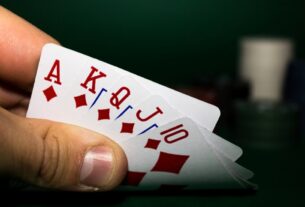There are many variations of Solitaire, but the three most popular are Klondike, Spider, and FreeCell.
1: Klondike
Klondike is the classic Solitaire game that most people think of when they hear the word “Solitaire.” In Klondike, you must stack all of the cards in each suit from Ace to King. The catch is that you can only stack cards in alternating colors (e.g., a black Ace on top of a red Two) and you can only move one card at a time. This makes for a challenging and fun game that can be played over and over again.
2: Spider
Spider is another popular variation of Solitaire. In Spider, there are two decks of cards instead of just one. The goal is to create stacks of cards in the same suit from King to Ace. However, unlike in Klondike, you can move multiple cards at a time as long as they are all in sequence and the same suit. This makes for a slightly easier game than Klondike, but it is still just as fun.
3: FreeCell
FreeCell is a variation of Solitaire that is considered to be one of the more difficult games. In FreeCell, you must stack all of the cards in each suit from Ace to King. However, unlike in Klondike and Spider, you can only move one card at a time AND you can not put any card on top of an Ace or a King. This makes for a very challenging game that will keep you coming back for more.
1: Klondike.
Klondike
Klondike is the most common form of Solitaire. It is played with a standard deck of 52 cards, and the object of the game is to move all of the cards into the foundations, sorted by suit and in order from Ace to King.
There are four foundation piles, one for each suit, and these are located at the top of the screen. The Ace foundation pile begins empty, and you must build it up in order from Ace to King. The other three foundation piles begin with a single card each, and you must build them up in order from Ace to King as well.
The remaining 48 cards make up the tableau, which is divided into seven columns. The first column has one card, the second column has two cards, and so on until the seventh column, which has seven cards. All of the cards in the tableau are face-up except for those in the bottom row of each column, which are face-down.
To begin play, turn over any one face-down card in any column. Then proceed to turn over any additional face-down cards that may be revealed as a result (these will be either directly above or directly below the first card you turned over). Once all of the face-down cards have been turned over in this way, you can start moving them around according to the rules below:
Cards can only be moved one at a time.
A card can only be moved if it is not blocked by another card. That is, you can only move a card if there is no other card stacked on top of it in its current column.
A card can only be moved if it creates a valid sequence when placed on top of another card. A valid sequence consists of two or more sequential cards of alternate color (e.g., black Jack on red Queen). Cards do not need to be moved together in order to create a valid sequence; they can be moved one at a time as long as they ultimately create a valid sequence when put together. When creating sequences in this way, Kings can go on top of Aces regardless of suit (e.g., red King on black Ace).
Once all possible moves have been exhausted using these rules, deal one new row of cards from left to right onto each empty column in the tableau (i.e., fill each empty space with a new card). These new cards will again be face-up except for those in the bottom row of each column, which will remain face-down. Play then proceeds as before: turn over any one face-down card followed by any additionally revealed face-downcards; then start moving around cards according to the rules given above.”
2: Spider.
Spider is a Solitaire card game that can be played with one or two decks of cards. The aim of the game is to remove all of the cards from the tableau, using a combination of skill and luck.
There are 10 columns in the tableau, and each column starts with an ace. The rest of the cards are dealt face down. The player must then build up the columns by suit, starting with the ace and ending with the king. Once all of the cards have been removed from the tableau, the player has won.
Spider is a challenging game that requires patience and planning. However, there are some tips and tricks that can help you to improve your chances of winning.
Here are some tips for playing Spider:
– Try to build up the suits in sequence, starting with the ace. This will make it easier to remove all of the cards from the tableau later on.
– If you get stuck, try to move a card from one column to another so that you can create a new sequence.
– Remember that you can only move one card at a time, so plan your moves carefully!
– Use any spare time to plan ahead so that you know which cards you need to remove next.
3: FreeCell.
There are many variations of solitaire, but three of the most popular are Klondike, Spider, and FreeCell. Here are some tips and tricks for how to play each one.
Klondike is a classic solitaire game. To win, you must stack all of the cards in the tableau in ascending order from Ace to King.
Spider is a bit more challenging than Klondike. The goal is to create stacks of cards in the tableau in descending order from King to Ace. But unlike Klondike, you can move any number of cards as long as they are in sequence.
FreeCell is another popular variation of solitaire. The goal is to move all of the cards to the foundation piles. But unlike other variations, you have four empty cells that you can use to temporarily store cards while you build up the foundation piles.
Here are some tips and tricks for playing each variation:
-In Klondike, try to create long runs of cards whenever possible. This will make it easier to move them around when necessary.
-In Spider, work on creating sequences of cards in the same suit. This will make it easier to move them into the foundation piles later on.
-In FreeCell, use your empty cells wisely! They can be a lifesaver when you get stuck and need somewhere to put a card temporarily while you figure out your next move.




